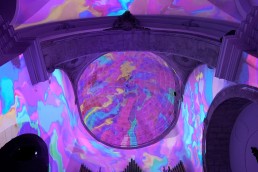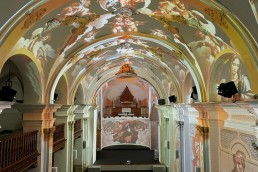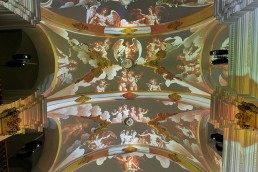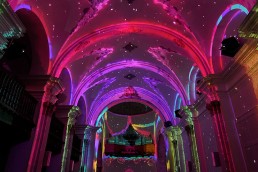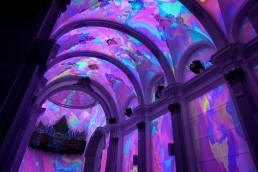This website uses cookies so that we can provide you with the best user experience possible. Cookie information is stored in your browser and performs functions such as recognising you when you return to our website and helping our team to understand which sections of the website you find most interesting and useful.
Luz Cuenca
ProjectLuz CuencaLocationSan Miguel Church, Cuenca, SpainManufacturersDatatonLighting DesignerIbercover Studio, SpainInstallerFluge Audiovisuales, SpainAcousticianFluge Audiovisuales, SpainSubmitted byDataton
Besides the sheer beauty of content and flawless technical execution, Luz Cuenca has effectively revitalized a historic landmark and turned it into an important cultural hub for the city. Luz Cuenca marks a pivotal moment in the city’s cultural development, symbolizing the convergence of tradition and innovation. During the inauguration President Emiliano García-Page described the initiative as a testament to Cuenca’s cultural richness, underlining its significance for the city’s tourism industry but also in fostering community engagement and appreciation for the arts by broad audiences. Visitors (including AV professionals who have seen many a mapping!) have been effusive in their praise of the experience and its transformation of the space. The talented AV team has successfully enhanced the existing architecture and famous ceiling, reaching new artistic (and technical) heights while still fully acknowledging the unique ambience and character of the venue.
The sound installation uses 20 KV2 Audio speakers, positioned around the space for maximum impact. The San Miguel Church has numerous arches and side spaces, and any technology has to be discreet to fit in with the architectural/religious ambience. As with the visuals, the aim is that visitors, no matter where they stand /sit, have the same powerful immersive experience.
20 Barco G60-W7 projectors running under a Dataton WATCHOUT multi-display system (Pixilab Blocks for overall control). The WATCHOUT system runs on four custom servers to deliver content to the projectors, ensuring a truly immersive experience with seamless mapping of the architectural features on the church walls and ceiling from a single production interface. The laser light source of the projectors brings outstanding image quality to the visuals. The projectors are compact which enables integration in the church architecture, with minimum impact on the historically significant space.
The venue has great historical, cultural and religious significance. This meant special attention had to be paid to delivering a discreet yet powerful system, with minimum impact on the architecture. As the venue is originally a church, the content had to ensure it reflected the right tone and, for best impact, actively use the architectural traits. Lastly, the venue was closed for extensive renovations and the launch of the immersive experience was tied to the re-opening which gave a very strict timeline for installation.

